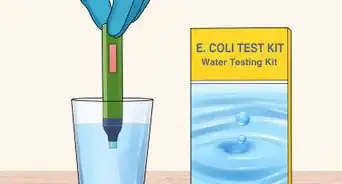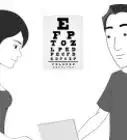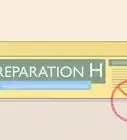This article was medically reviewed by Theodore Leng, MD. Dr. Leng is a board certified Ophthalmologist and Vitreoretinal Surgeon and an Assistant Professor of Ophthalmology at Stanford University. He completed his MD and Vitreoretinal Surgical Fellowship at Stanford University in 2010. Dr. Leng is a Fellow of the American Academy of Ophthalmology and the American College of Surgeons. He is also a member of the Association for Research in Vision and Ophthalmology, the Retina Society, the Macula Society, the Vit-Buckle Society, as well as the American Society of Retina Specialists. He received the Honor Award by the American Society of Retina Specialists in 2019.
There are 10 references cited in this article, which can be found at the bottom of the page.
wikiHow marks an article as reader-approved once it receives enough positive feedback. In this case, 81% of readers who voted found the article helpful, earning it our reader-approved status.
This article has been viewed 1,034,049 times.
Eyewash setups aren’t just for high-hazard areas such as chemistry labs. Homes that contain everyday household cleaning materials as well small children should have a quick method to rinse hazardous material from eyes. Even in non-emergency situations, rinsing your eyes with water can help soothe worn-out, tired eyes by increasing moisture and circulation.[1] Medical professionals may recommend an eyewash for other situations as well. By knowing how to properly administer an eyewash solution, you can prepare yourself for a variety of situations.
Steps
Preparing to Wash
-
1Determine if you need immediate medical attention. Some contaminants can cause chemical burns or other complications. Check the label of the chemical to ensure an eyewash is appropriate. You can always contact the Poison Control Center at (800) 222-1222 to learn how to respond to a particular chemical in your eyes.
- You should also seek immediate medical attention if you develop symptoms such as nausea or vomiting, headaches or lightheadedness, double or impaired vision, dizziness or loss of consciousness, and rashes or fever.
- If eye washing is ineffective in your situation, you should call the Poison Control Center and seek medical attention. You should also contact another person to come get you to ensure you receive the proper medical attention.
-
2Determine how long to wash your eyes. The amount of time you should spend washing your eyes depends upon the type of contaminant you need to rinse out. The times can vary greatly; however, you can never wash your eyes for too long when they have been exposed to a contaminant. Err on the side of caution when it comes to how long you rinse your eyes. You should wash:[2]
- Five minutes for mildly irritating chemicals, such as hand soap or shampoo
- Twenty minutes or longer for moderate-to-severe irritants, including hot peppers
- Twenty minutes for non-penetrating corrosives, such as acids like battery acid[3]
- At least sixty minutes for penetrating corrosives, which include household alkalis like drain cleaner, bleach, and ammonia[4]
Advertisement -
3Keep an eyewash solution at home. Commercial eyewash solutions are sterile, and they have a balanced neutral pH of 7.0.[5] This means that using an eyewash solution will always be preferable to simply using water.
-
4Use sterilized water. If you don’t have access to an actual eyewash solution, then try to use sterilized water. Tap water can still contain harmful elements that will further irritate your eyes
- You can also use bottled water.
- Milk can soothe burning from foods such as peppers. However, use sterile solution to flush your eyes as well. Always ensure that the milk hasn’t spoiled since this can introduce bacteria into the eyes.
-
5Make sure the solution is at the correct temperature. Especially when using bottled water or the milk combination, you should ensure that you don’t take liquids directly from the refrigerator. Regardless of which option you’re using to wash out your eyes, the temperature should be between 60–100°F (15.6–37.8°C).[6]
-
6Choose a method to administer the eyewash. You need some way to safely and cleanly introduce your water or eyewash solution to your eye. Some common household items you can use to do this include a bowl, a small cup, or an eyedropper. No matter the item you use, clean it thoroughly with soap and water and allow it to dry before adding your sterile water or solution to it.
- A bowl is the best option whether you need to flush out a contaminant, a foreign particle, or even just for flushing tired eyes. The bowl should be large enough for you to fit your entire face in it.
- You can use a small cup that fits snugly around the rim of your eye socket, such as a shot glass. However, this should only be used for contaminants or tired eyes and not for small particles in your eye.
- You should avoid using the eyedropper for most situations that are simply treating dry, tired eyes.
-
7Don't hesitate washing out chemicals. With all that being said, sometimes time is of the essence, especially with acid or basic chemical exposures. Getting a chemical rinsed out as soon as possible is more important than finding sterile solution, making sure it is at the correct temperature, etc. If you've been exposed to a corrosive material in particular, it's okay to just run to the sink and start rinsing.
- The longer you leave these caustic/acidic materials on the surface of the eye, the more damage will be done. the goal is to rinse them out as quickly as you can.
Administering the Eyewash with a Bowl
-
1Get a bowl. Administering the eyewash from a bowl is the primary method for flushing eyes that have been exposed to a contaminant or that have a small foreign particle in them. It’s also ideal for everyday relief of tired eyes. The thoroughly cleaned bowl should be large enough for you to fit your face in it.
-
2Fill the bowl with the eyewash solution. Whether you’re using an actual eyewash solution or simply water, make sure that the liquid is between 60–100°F (15.6–37.8°C).[7] Do not fill the bowl to the brim because placing your face in the bowl will cause it to overflow.
-
3Submerge your face in the bowl. Take a deep breath and dip your entire face into the bowl so that the solution covers your eyes as well. Make sure not to tilt your head too far forward into the bowl or the solution will run up your nose.
-
4Open and rotate your eyes. Ensure the whole surface of the eye comes into contact with the water. Rotating your eyes in a circular pattern helps get the water in your eye, which will help remove the contaminant or particle.[8]
-
5Lift your face from the bowl and blink. Remove your face from the solution. By blinking a few times, you will further ensure that the solution gets an even coating over your eyes.
-
6Repeat as needed. For dry, tired eyes, you can simply dunk your face once or twice until you feel relief in your eyes. In order to actually flush out a contaminant, refer to the guidelines in Method 1 for the amount of time you should spend flushing your eyes.
- Again, you can't over-wash your eyes. If you've been exposed to an irritant, especially a chemical, it's okay to wash longer than the suggested amount of time.
-
7Use a clean towel to dry your face. Don’t wipe at your eyes at all. Simply pat dry your closed eyelids with a clean, dry portion of the towel.
Administering the Eyewash with a Cup
-
1Do not use this method if you have a foreign particle in your eye. This method is best for washing tired eyes. If your eye has been contaminated, then the ideal method is the previous bowl method. Consult an eye care professional before using this method for anything other than washing tired eyes.[9]
-
2Fill a small, clean cup with an eyewash solution. You want to choose a cup that is roughly the diameter of your eye socket. A thoroughly cleaned shot glass is one example of a small-diameter cup for this method.
- The commercial eyewash solution or sterile water should be between 60–100°F (15.6–37.8°C).[10]
-
3Position the cup snugly against your eye. Tilt your head down toward the cup. Place the rim of the cup snugly against your eye socket.
-
4Tilt your head back. While still holding the cup against your eye socket, tilt your head back so that your eye and the bottom of the cup both face upward. This will bring the solution in direct contact with your eye.
- Be prepared for some small spills. Lean over a sink while you do this so that the solution doesn't run down your face and onto your clothes. If you're worried, wear a towel around your neck to keep yourself dry.
-
5Look around and blink. By looking around in a circular pattern and blinking several times, you’ll help the solution cover much of your eye, which will help hydrate them or remove the contaminant.[11]
-
6Repeat as necessary. You can then lower your head to remove the cup without spilling the solution all over yourself. One round of flushing might be enough for dry, tired eyes. However, you may need to repeat in order to finish flushing a contaminant from your eyes.
-
7Use a clean towel to dry your face. Don’t wipe at your eyes at all. Simply pat dry your closed eyelids with a clean, dry portion of the towel.
Administering the Eyewash with an Eyedropper
-
1Do not use this method if you have a foreign particle in your eye. This method is best for washing tired eyes or for washing the eyes of small children who do not understand the other methods. If your eye has been contaminated, then the ideal method is the bowl method.
-
2Fill a clean eyedropper with the solution. Submerge the tip of a clean eyedropper in your solution or water, then depress and release the dropper's bulb to draw water into the dropper.
- If you have a sterile plastic syringe, you can also carefully use one that does not have a sharp tip or needle.
-
3Squeeze a few drops of the solution into your eye. Tilt your head back, raise the dropper just above your open eye, and squeeze the bulb delicately to release a few drops of water.
- Ensure that you do not actually touch the dropper to your eyes or eyelashes.
-
4Blink several times. To get an even coating of the solution across your eye, blink several times. Try to blink the solution into your eye before it pools and run down your cheek instead.
-
5Repeat as necessary. You may only need a few drops in order to refresh dry, tired eyes. However, you will likely need to repeat the process numerous times in order to actually flush a contaminant out of your eye.
-
6Try a towel. An alternative method for young children is to dip a clean cloth into the solution before gently dabbing in on the child’s closed eyelid. Even with light pressure, the dabbing will squeeze the solution onto the eyelid and lashes, which the child will then spread over the eyes by blinking.
- Repeat as needed, but do not double dip the same spot on the towel into the solution for sanitary purposes. Use a different dry section of the towel, or use a different towel entirely.
Making Your Own Eyewash Solution
-
1Boil water. Note that professional-grade, commercially available eye washes are always preferable to homemade remedies. No matter how meticulous you are, there's always the risk of accidentally irritating the eyes or giving yourself a potentially severe infection.[12] There are reported cases of people trying to make saline solution at home and getting acanthamoeba infections. This is a risky procedure. However, if you understand the risks and still want to make your own eye wash solution, there are measures you can take to ensure that your solution is as clean and safe as possible. Begin by boiling a pot of water to kill bacteria and other organisms in it that can contaminate your eyes. Bring the water to a full rolling boil for at least one minute and then cool before use.[13]
- If possible, it's better to use sterile, purified water rather than ordinary tap water. Tap water can contain more bacteria and additives than sterile water.
- If you don't want to make an eye wash solution, you can always substitute tap water. Just understand that it may be more irritating and it carries a higher risk of containing bacteria, etc.[14]
-
2Add salt to the water. For homemade eye washes, add one teaspoon of ordinary table salt for each cup of water while the water is boiling. The closer your solution is to the natural salinity (salt concentration) of your tears, the lesser the shock to your eyes. Though the salinity of tears varies based on whether the tears are produced as the result of emotions (pain, sadness, etc.) or merely as a lubricant for the eye during normal use, tears are usually less than 1% salt by weight.
-
3Stir to dissolve the salt. Ensure the salt that you add dissolves in the water. Since the water is boiling and you've added a relatively small amount of salt, it shouldn't take much stirring to dissolve it completely. Stir until you no longer see solid salt grains at the bottom of the pot.
-
4Allow the solution to cool. Never use an eyewash that's still hot. You can seriously injure or even blind yourself by burning your eyes with hot water. Remove your solution from heat and allow it to cool to room temperature. You may transfer the solution to a different container, provided the container has been carefully washed and rinsed with soap and sterile water. When the solution reaches room temperature (or lower) it's ready for use.
- Cover the solution while it's cooling to ensure no new contaminants are introduced.
- Keeping the solution cool can give it a refreshing effect when it's used on your eyes. However, don’t cool the eyewash below 60°F (15.6°C).[15] It can be painful and even slightly damaging to your eyes.
- Even if you take extra care to keep your solution clean, be sure to throw it out after a day or two. Bacteria can be re-introduced to a solution after it's been boiled.
Flushing Your Eyes in an Emergency
-
1Know which injuries warrant immediate eye flushing. In some cases, like if you've introduced a serious irritant or contaminant to your eye, you shouldn't bother with sterile eye washes. Instead, your focus should be on immediately and thoroughly washing your eyes, then getting medical help. If you accidentally splash your eyes with a chemical that is an acid, an alkaline (base), a corrosive, or some other kind of irritant, immediately stop what you're doing and flush your eyes with water.
-
2Call the Poison Control Center. You can reach the Poison Control Center at (800) 222-1222 for advice. They will advise you either to wash your eyes or seek immediate medical attention based on the chemical contaminant.[16]
- For instance, some chemicals—such as most of the alkali metals—react violently with water. The Poison Control Center can easily identify the correct steps for you to take.
- If they advise you to call 911 and also to rinse your eyes, have someone else around you call emergency services for you while you concentrate on rinsing your eyes. The quicker you can get to a hospital, the more likely you are to prevent serious injury or blindness.
-
3Use an eyewash station. Most places where you can conceivably splash dangerous chemicals in your eye will come equipped with special eye wash stations designed for just such a situation.[17] Proceed immediately to the eyewash station, depress the lever (which should be brightly marked and easily accessed), and place your face in front of the water spouts, which will spray water at a low pressure. Keep your eyes as wide open as possible. You may want to use your fingers to keep them wide open.
-
4Wash for fifteen minutes. Water doesn't neutralize many chemicals. It simply dilutes them and washes them away. For this reason, a large quantity is needed. The volume of wash delivered should not be less than 1.5 liters/minute (0.4 gallons/minute) for fifteen minutes.[18]
-
5Use tap water If an eyewash station is unavailable. If you can't immediately find an eyewash station, proceed to the nearest sink as quickly as you can. Tap water isn't ideal for eye washing, as it's not as sterile as the purified water used in many laboratories, but it's far more important to rinse the chemicals from your eyes than it is to worry about possible infections.[19] Splash water into your open eyes as generously as you can. Continue for at least 15–20 minutes.[20]
- If your sink has an adjustable faucet, point it directly into your eye at a low pressure and a lukewarm temperature and hold your eyes open with your fingers.
-
6Get medical attention. If the Poison Control Center has advised you to see a medical professional once you’ve done the immediate eye rinsing, then seek medical attention.
Expert Q&A
-
QuestionHow can I clean my eyes naturally?
 Kerry Assil, MDDr. Kerry Assil is a board certified Ophthalmologist and the Medical Director and CEO of Assil Eye Institute (AEI), an ophthalmology practice in Los Angeles, California. With over 25 years of experience and as one of the world's foremost experts in eye surgery, Dr. Assil has trained 14,000+ physicians in refractive and cataract surgery, performed 70,000+ eye surgeries, and authored over 100 textbooks, chapters, and articles on refractive and cataract surgery. He's served as the Distinguished Professor lecturer at Harvard, Johns Hopkins, Duke, Baylor, Tokyo, and UCLA among others. He has served on the advisory boards of 20+ ophthalmic device, pharmaceutical, and scientific companies and has appeared in the media as an authority on advances in vision-restoring surgeries and refractive surgery. Dr. Assil continues to make significant advances in his field with numerous inventions and introductions of state-of-the-art technologies.
Kerry Assil, MDDr. Kerry Assil is a board certified Ophthalmologist and the Medical Director and CEO of Assil Eye Institute (AEI), an ophthalmology practice in Los Angeles, California. With over 25 years of experience and as one of the world's foremost experts in eye surgery, Dr. Assil has trained 14,000+ physicians in refractive and cataract surgery, performed 70,000+ eye surgeries, and authored over 100 textbooks, chapters, and articles on refractive and cataract surgery. He's served as the Distinguished Professor lecturer at Harvard, Johns Hopkins, Duke, Baylor, Tokyo, and UCLA among others. He has served on the advisory boards of 20+ ophthalmic device, pharmaceutical, and scientific companies and has appeared in the media as an authority on advances in vision-restoring surgeries and refractive surgery. Dr. Assil continues to make significant advances in his field with numerous inventions and introductions of state-of-the-art technologies.
Board Certified Ophthalmologist I wouldn't put anything in your eyes. You can use eye drops for relief if you'd like, but that's about it. Your eyes don't really need to be "cleaned out" like that if you're thinking of doing some kind of health treatment or anything.
I wouldn't put anything in your eyes. You can use eye drops for relief if you'd like, but that's about it. Your eyes don't really need to be "cleaned out" like that if you're thinking of doing some kind of health treatment or anything.
Warnings
- Do not overuse salt. Too much salt can cause cells to burst and feel very uncomfortable or even painful.⧼thumbs_response⧽
- Observe all relevant safety protocol when working with any chemicals, including wearing eye protection. Safety measures won't absolutely guarantee you won't be injured, but they significantly reduce your risk of injury.⧼thumbs_response⧽
- Do not use water that is too hot or too cold.⧼thumbs_response⧽
Things You'll Need
- A large-sized bowl
- An eye-sized cup
- An eyedropper
- Eyewash solution
- Lukewarm water
- Towel or paper towels
References
- ↑ http://getwellstaywellathome.com/blog/2012/03/dr-christophers-eye-wash/
- ↑ http://www.ccohs.ca/oshanswers/safety_haz/emer_showers.html
- ↑ http://www.bbc.co.uk/schools/gcsebitesize/science/add_gateway_pre_2011/chemical/acidsrev1.shtml
- ↑ http://www.bbc.co.uk/schools/gcsebitesize/science/add_gateway_pre_2011/chemical/acidsrev1.shtml
- ↑ http://www.bbc.co.uk/schools/gcsebitesize/science/add_gateway_pre_2011/chemical/acidsrev1.shtml
- ↑ https://www.seton.com/blog/2013/03/a-quick-glance-at-eyewash-station-regulations
- ↑ https://www.seton.com/blog/2013/03/a-quick-glance-at-eyewash-station-regulations
- ↑ http://blink.ucsd.edu/safety/research-lab/laboratory/eye-wash.html
- ↑ http://www.ncbi.nlm.nih.gov/pmc/articles/PMC537322/?page=1
- ↑ https://www.seton.com/blog/2013/03/a-quick-glance-at-eyewash-station-regulations
- ↑ http://blink.ucsd.edu/safety/research-lab/laboratory/eye-wash.html
- ↑ http://www.webmd.com/eye-health/tc/normal-saline-eye-wash-solution-topic-overview
- ↑ https://www.health.ny.gov/environmental/water/drinking/boilwater/response_information_public_health_professional.htm
- ↑ http://www.safetyandhealthmagazine.com/articles/selecting-an-emergency-eyewash-station-2
- ↑ https://www.seton.com/blog/2013/03/a-quick-glance-at-eyewash-station-regulations
- ↑ http://blink.ucsd.edu/safety/research-lab/laboratory/eye-wash.html
- ↑ https://books.google.com/books?id=dv2g8aOIhhsC&pg=PA87&lpg=PA87&dq=eye+wash+optometry&source=bl&ots=bFKlycw_Ru&sig=FXU1ECPl0oAtjhexQHy3w_6zCGY&hl=en&sa=X&ei=WqpKVaT6OtGvogTWk4C4BQ&ved=0CDwQ6AEwCQ#v=onepage&q=eye%20wash%20optometry&f=false
- ↑ http://www.ccohs.ca/oshanswers/safety_haz/emer_showers.html
- ↑ http://www.safetyandhealthmagazine.com/articles/selecting-an-emergency-eyewash-station-2
- ↑ http://blink.ucsd.edu/safety/research-lab/laboratory/eye-wash.html
About This Article
To wash your eyes with water, start by filling a large, clean bowl with water. Then, dip your face into it so your eyes are fully submerged. Once your face is in the water, open your eyes and rotate them, which will help remove any contaminants or particles in your eyes. When you're finished, lift your face out of the water and blink several times. Repeat as needed. To learn how to wash your eyes using a cup or an eye dropper, scroll down!
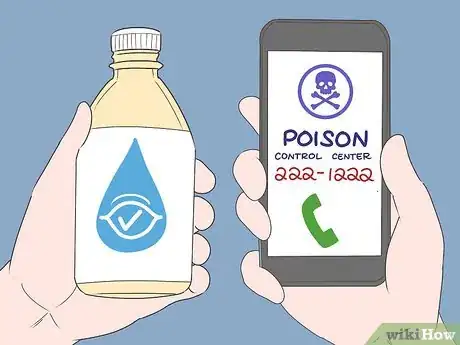
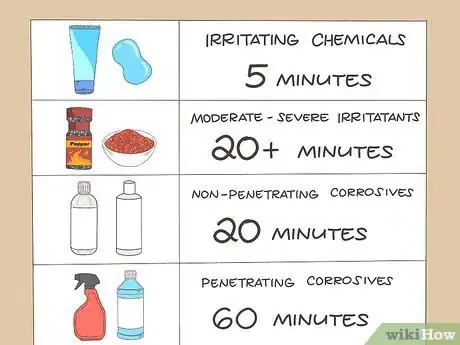
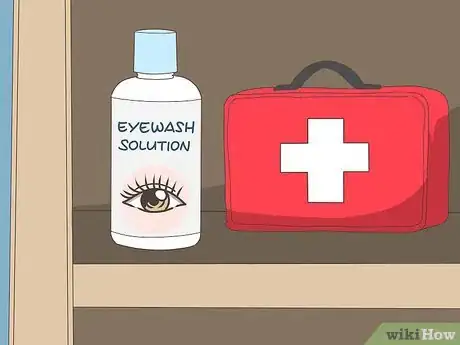

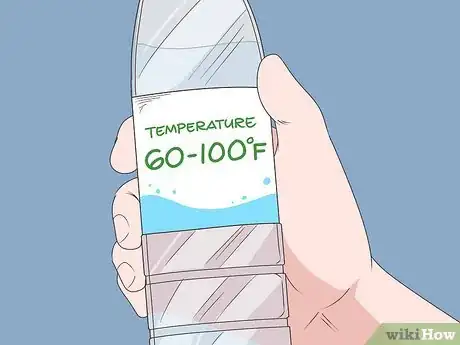
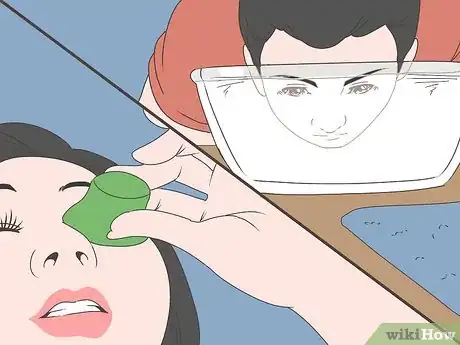
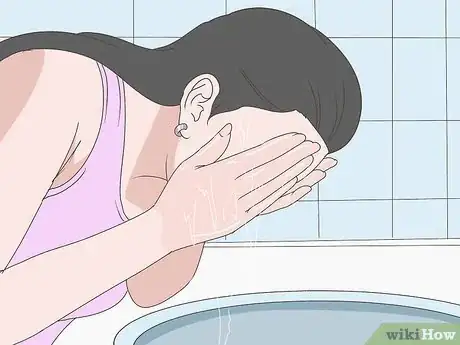
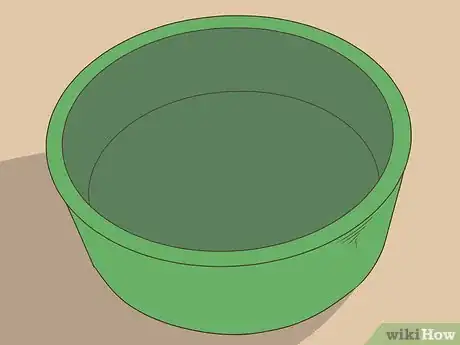
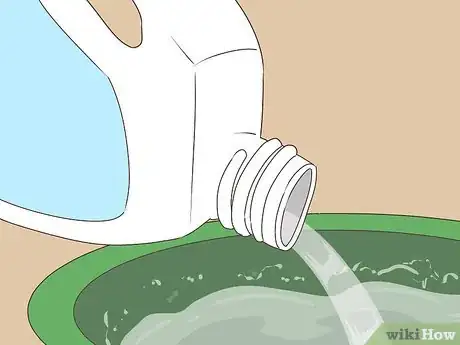
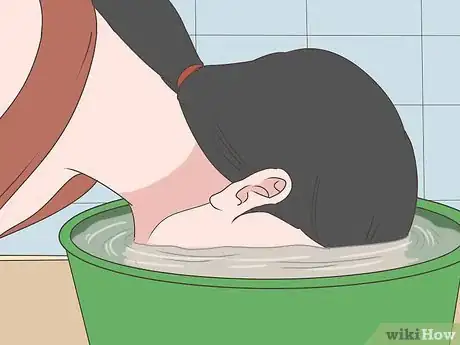
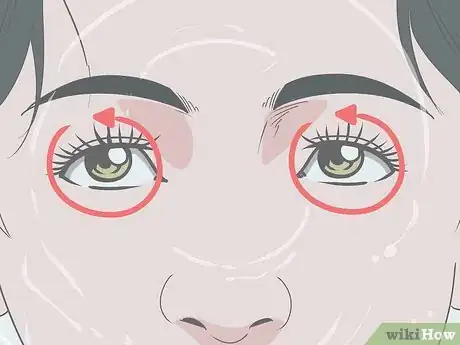
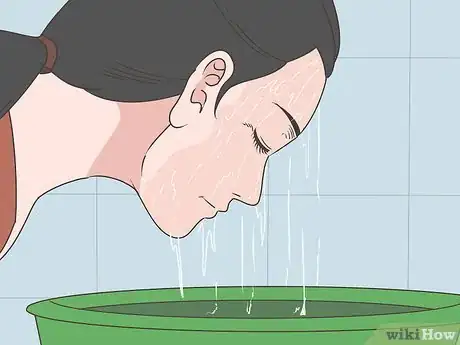

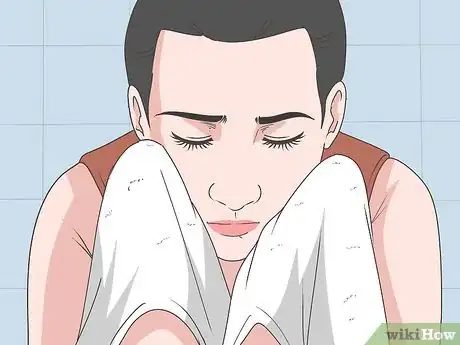

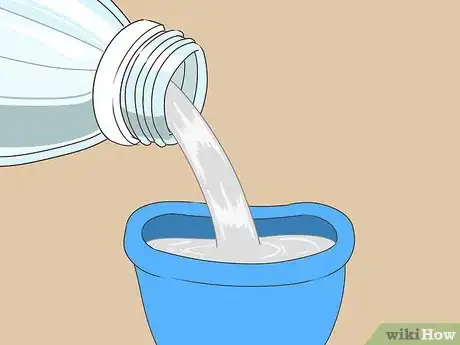


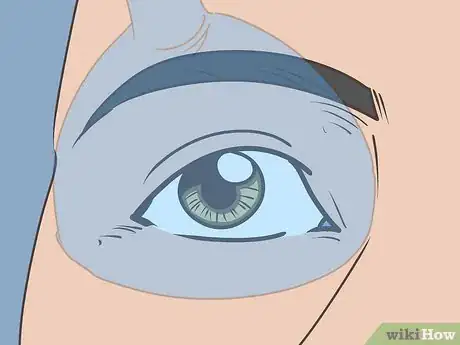
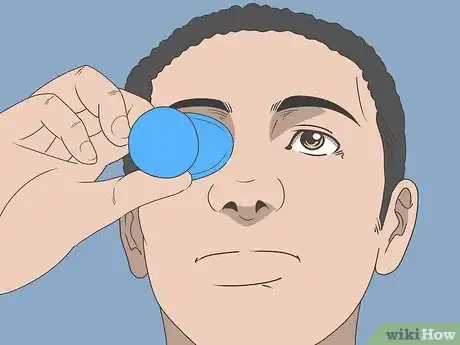
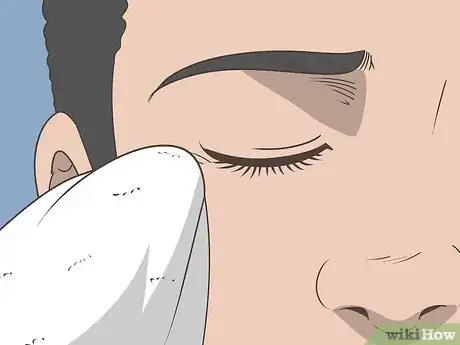
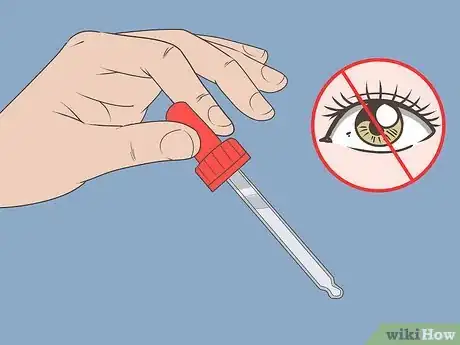

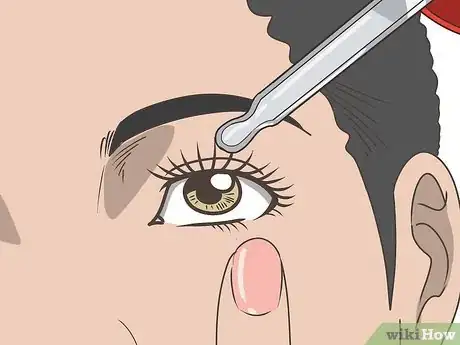
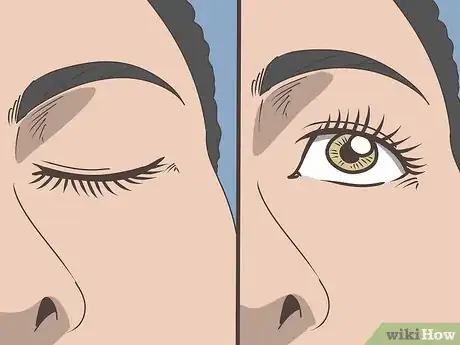
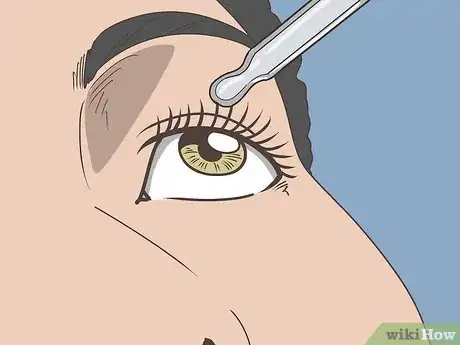

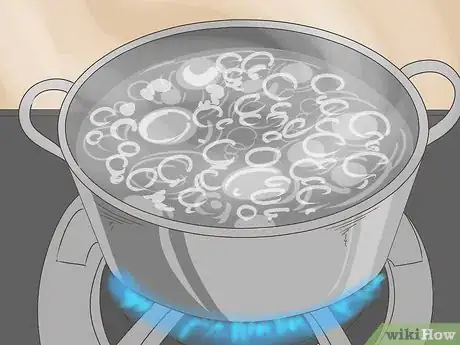


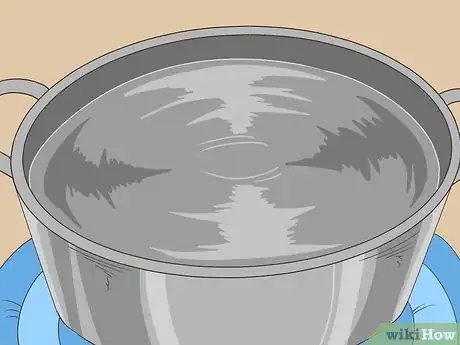
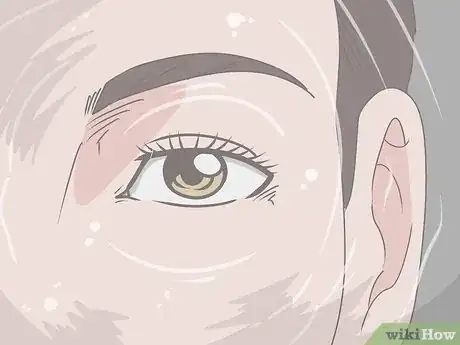






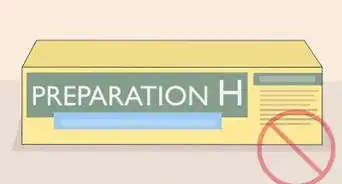
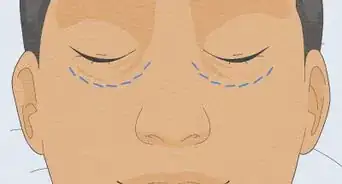


-Step-3-Version-2.webp)

